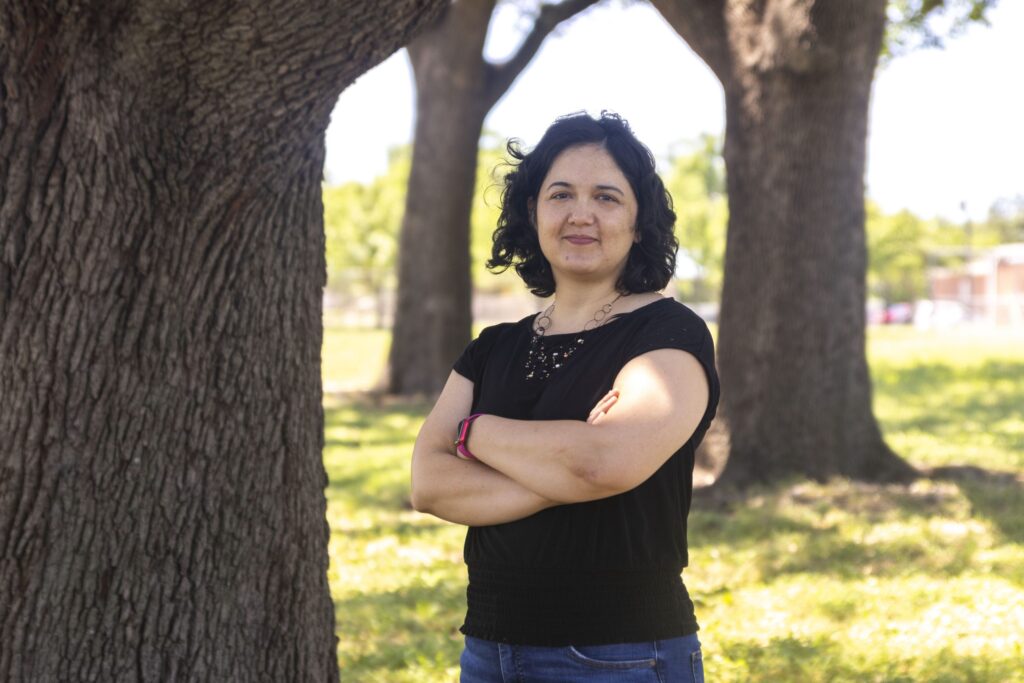By Natalie Parker
Walton, Welch, Whitman, Winifred, Wosley. These are the names of only a few of the “W streets” drivers navigate in Wedgwood. My husband and I bought our home in the southwest Fort Worth neighborhood 10 years ago, just before housing prices skyrocketed and moved in 33 hours before our first child was born.
When we started looking for a house, our realtor told us Wedgwood was one of two neighborhoods within the city’s boundaries that remained “affordable.” It has character to boot — that nebulous quality that includes spacious lawns, homes with a wide range of facades, huge shade trees on every street and, of course, confusingly named W streets (Walla, Wolens, Wessex, Worrell).
We found a house near J.T. Stevens Elementary — bound by W streets Wakeland, Walburn, Wilton and Wrigley. Long before our kids were old enough to enroll, we visited the school’s shaded playground on the weekends. They often bounced in the pretend truck that has been on the property since the 1970s.

Where I Live spotlights Tarrant County’s unique neighborhoods, as told by the residents that live there. Submit an essay to tell us about your neighborhood. Where I Live is sponsored by Frost Bank.
Some might disagree with my characterization of tunnels being dug from the front of a house to the curb as evidence of character, but these tunnels have been omnipresent in the 10 years we have lived here. The original cast-iron plumbing used in the ’50s and ’60s has a lifetime of roughly 50 years. We replaced our 60-year-old plumbing last year, much to the chagrin of our bank account. Buyers beware.
One of our neighbors, who is 80, bought his home in 1963, when most of the current neighborhood was ranchland. Though it has been decades since that neighbor worked for the FBI, he introduced himself to make sure we knew that he knew our license plate numbers.
Despite this man’s concerns about safety, people walk the neighborhood morning, noon and night. Sometimes, the people passing by on foot or bicycle are making the daily commute to a nearby workplace on Hulen Street, and I am grateful our kids can see that not everyone has a car; that walking to work in the heat of summer or during a rainstorm is a reality for many people. Wedgwood isn’t a paradise for everyone. Over 70% of J.T. Stevens Elementary students qualify for free lunch, and pockets of the neighborhood have high levels of crime.
We live in Wedgwood Square but benefit from the strength of the Wedgwood East Neighborhood Association (WENA). For example, about five years ago, a mother did the hard work required to host a blocks-long trick-or-treat event. Now, thousands of participants parade up and down the street in costumes each Halloween. (Please donate candy or money if you participate. Residents can’t fund the purchase of 10,000 pieces of candy on their own.) In addition, the Wedgwood Library, situated in Wedgwood East, remains open because of community activism.
What else gives Wedgwood character? A number of people raise chickens in their enormous backyards and sell the extra eggs to neighbors. (Did you know that roosters crow all day, not just in the morning?) On Halloween, we can walk through a haunted house resurrected every year in a neighbor’s front lawn. During the spring and summer, another neighbor projects movies onto the house from the front lawn. Anyone can plop down and enjoy the entertainment.
If you don’t hear about Wedgwood’s W streets (Wales, Walraven, Waco, Wayland, Whistler, Winesanker), you might hear about the enormous trees lining the streets. These trees are priceless after having grown for 60-plus years. We have a small redbud in our front yard and will one day plant a live oak to ensure our W street maintains its character for another family years from now. Hopefully, before we pass the house keys to someone else, we will be old, eccentric neighbors who take daily walks, say hi to strangers, and — maybe — keep track of our neighbors’ license plate numbers.
Natalie is an academic program specialist at Texas Christian University and a former director of the faculty development center at Texas Wesleyan University.
Wedgwood
Total population: 6,380
Female: 54% | Male: 46%
Age
0-9: 13%
10-19: 13%
20-29: 14%
30-39: 14%
40-49: 10%
50-59: 9%
60-69: 12%
70-79: 9%
80 and older: 7%
Education
No degree: 10%
High school: 23%
Some college: 32%
Bachelor’s degree: 25%
Post-graduate: 10%
Race
White: 50% | Black: 25% | Hispanic: 18% | Asian: 5% | Two or more: 1%
Click on the link to view the schools’ Texas Education Agency ratings:
Related
Fort Worth Report is certified by the Journalism Trust Initiative for adhering to standards for ethical journalism.
Republish This Story
![]()


